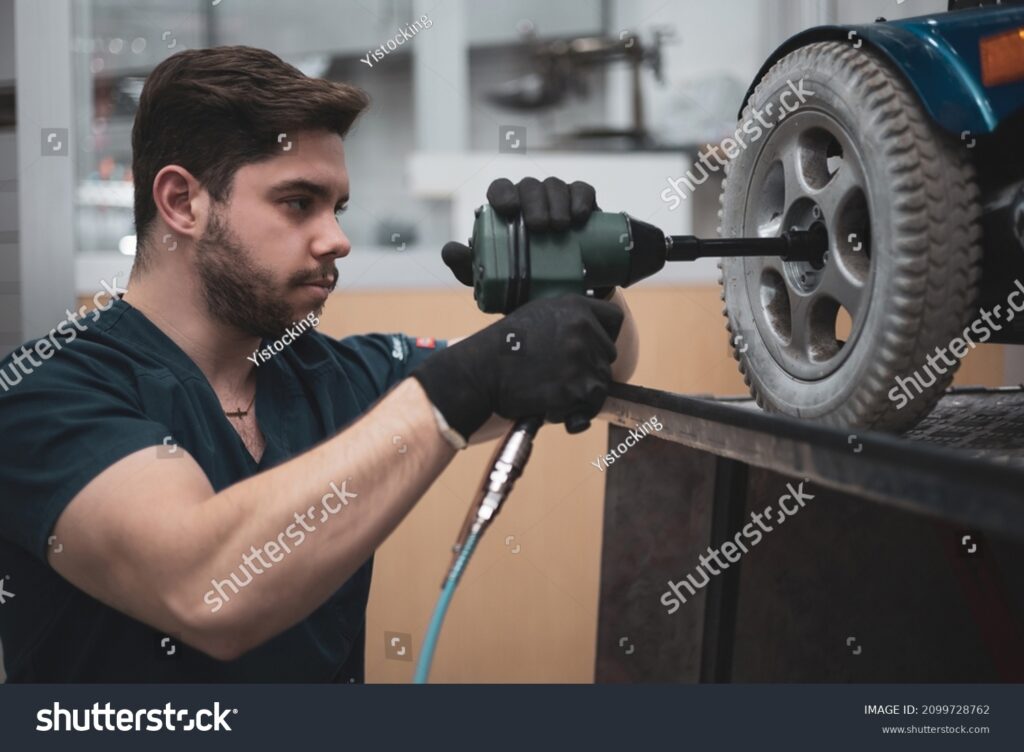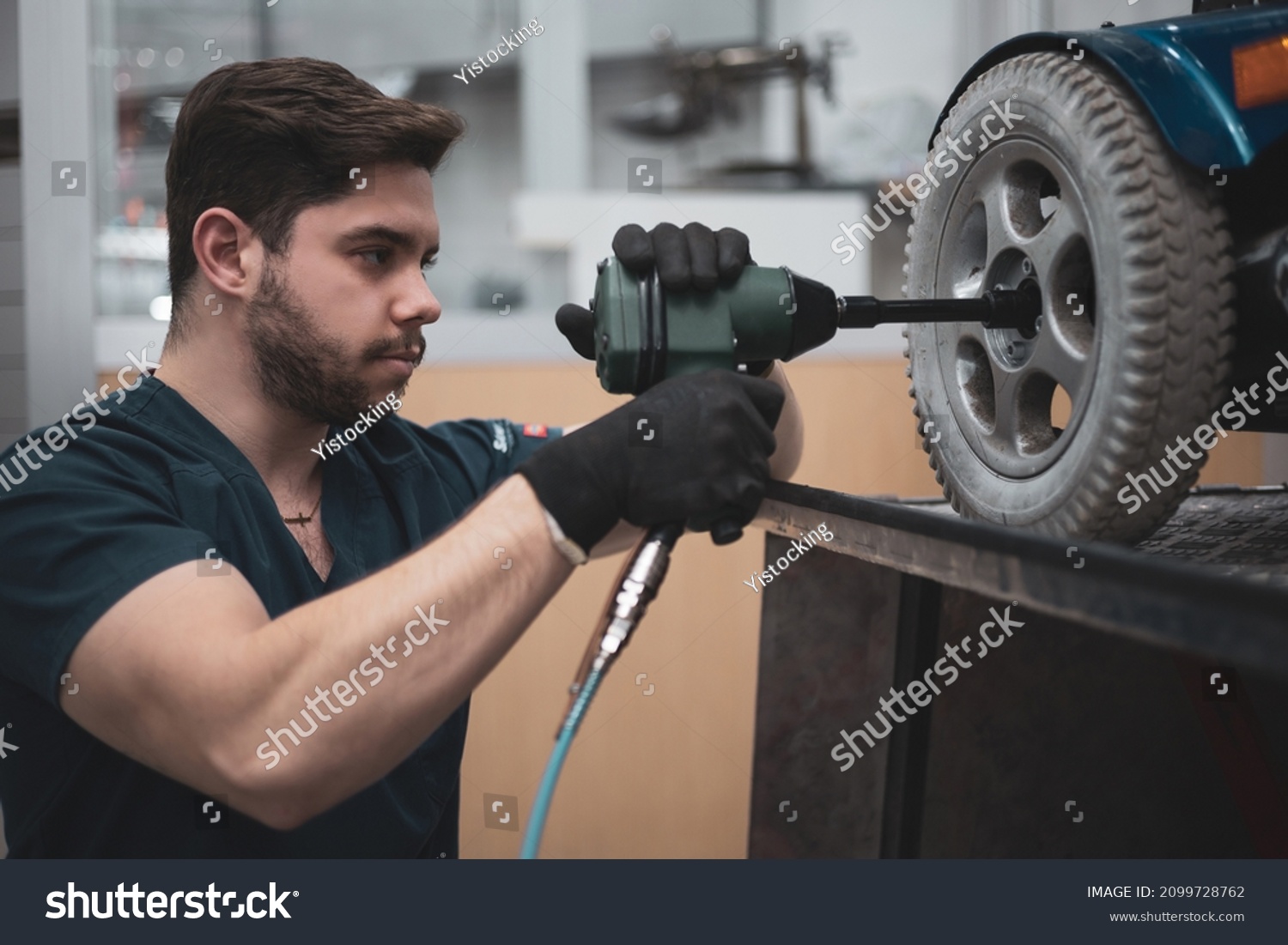
Wheelchair Repair at Home: A Practical Guide to Maintaining Mobility
For individuals reliant on wheelchairs, the ability to maintain mobility is paramount. A malfunctioning wheelchair can severely impact independence and quality of life. While complex repairs often necessitate professional intervention, many common issues can be addressed with **wheelchair repair at home**. This guide provides practical advice and insights into the essential skills and knowledge needed to keep your wheelchair functioning optimally. We’ll explore preventative maintenance, troubleshooting techniques, and when to seek expert assistance, ensuring you’re well-equipped to handle the challenges of **wheelchair repair at home**.
Understanding the Importance of Wheelchair Maintenance
A wheelchair is more than just a mobility device; it’s an extension of the user’s body, enabling participation in daily activities, social engagements, and professional pursuits. Regular maintenance is crucial for several reasons:
- Safety: A well-maintained wheelchair is a safe wheelchair. Faulty brakes, loose components, or worn tires can lead to accidents and injuries.
- Functionality: Proper maintenance ensures the wheelchair operates smoothly and efficiently, maximizing its effectiveness and minimizing user fatigue.
- Longevity: Consistent care extends the lifespan of the wheelchair, saving money and reducing the need for premature replacements.
- Independence: Being able to perform basic **wheelchair repair at home** empowers users to maintain their independence and control over their mobility.
Essential Tools and Supplies for Wheelchair Repair at Home
Before embarking on any **wheelchair repair at home**, it’s important to gather the necessary tools and supplies. Having these items readily available will streamline the process and ensure you’re prepared for common maintenance tasks.
- Basic Tool Kit: This should include a set of Allen wrenches (metric and standard), a screwdriver set (Phillips and flathead), pliers, and a wrench set.
- Tire Repair Kit: A patch kit, tire levers, and a portable air pump are essential for addressing flat tires.
- Lubricants: Silicone-based lubricants are ideal for lubricating moving parts like axles and pivot points. Avoid petroleum-based lubricants, as they can attract dirt and grime.
- Cleaning Supplies: Mild soap, water, and soft cloths are all that’s needed to clean the wheelchair frame and components.
- Spare Parts: Keep a supply of commonly needed parts like tires, inner tubes, and brake cables on hand.
- Owner’s Manual: The wheelchair’s owner’s manual is an invaluable resource, providing specific instructions and diagrams for your particular model.
Common Wheelchair Problems and How to Fix Them
Many common wheelchair problems can be addressed with **wheelchair repair at home**. Here’s a look at some of the most frequent issues and how to troubleshoot them:
Flat Tires
Flat tires are a common inconvenience. Fortunately, they’re usually easy to fix. First, locate the puncture and remove the tire. Then, use the tire levers to remove one side of the tire from the rim. Pull out the inner tube and inspect it for punctures. Patch any holes using the tire repair kit. Reinstall the inner tube, ensuring it’s properly seated, and then re-inflate the tire to the recommended pressure. If you are experiencing recurring flat tires, consider upgrading to solid tires or puncture-resistant tires. However, if the damage is severe, or you are unable to perform the repair, professional **wheelchair repair** may be necessary.
Loose or Squeaky Wheels
Loose or squeaky wheels can significantly impact the smoothness of the ride. Check the wheel axles for looseness and tighten them as needed. Lubricate the axles and any other moving parts with a silicone-based lubricant to reduce friction and eliminate squeaking. If the wheels continue to squeak or feel loose, they may need to be replaced.
Malfunctioning Brakes
Brakes are critical for safety. Regularly inspect the brake cables and pads for wear and tear. Adjust the brake cables to ensure they engage properly. If the brake pads are worn, replace them. If the brakes are not functioning correctly, seek professional **wheelchair repair** immediately.
Stiff or Difficult-to-Operate Components
If components such as armrests, footrests, or folding mechanisms are stiff or difficult to operate, lubrication is often the solution. Apply silicone-based lubricant to all moving parts and pivot points. If the problem persists, check for any obstructions or damage to the components. You might need professional **wheelchair repair** if the parts are damaged or broken beyond repair.
Frame Issues
Inspect the wheelchair frame for cracks, bends, or other signs of damage. Minor scratches can be touched up with paint to prevent rust. If you notice any significant damage, it is crucial to consult a professional. Attempting to repair a damaged frame at home could compromise the structural integrity of the wheelchair, potentially leading to injury.
Preventative Maintenance for Your Wheelchair
Preventative maintenance is key to minimizing the need for **wheelchair repair at home**. Implementing a regular maintenance schedule can help identify potential problems early and extend the life of your wheelchair.
- Daily Inspection: Before each use, visually inspect the wheelchair for any obvious damage, loose components, or tire issues.
- Weekly Cleaning: Wipe down the frame and components with a damp cloth to remove dirt and debris.
- Monthly Lubrication: Lubricate all moving parts with silicone-based lubricant.
- Regular Tire Pressure Checks: Maintain the correct tire pressure to ensure optimal performance and prevent flats.
- Annual Professional Inspection: Have your wheelchair inspected by a qualified technician at least once a year to identify and address any potential issues that may not be apparent during routine maintenance.
When to Seek Professional Wheelchair Repair
While many **wheelchair repair at home** tasks are manageable, there are times when professional assistance is necessary. Here are some situations that warrant professional **wheelchair repair**:
- Complex Mechanical Issues: Problems with the motor, electronics, or complex mechanical components should always be handled by a qualified technician.
- Frame Damage: Any significant damage to the wheelchair frame requires professional assessment and repair.
- Unsure of the Repair: If you’re unsure how to perform a specific repair, it’s best to seek professional help to avoid causing further damage or compromising safety.
- Warranty Issues: If your wheelchair is still under warranty, attempting repairs at home may void the warranty.
- Recurring Problems: If a problem keeps recurring despite your efforts, it indicates a deeper issue that requires professional diagnosis and repair.
Finding a Qualified Wheelchair Repair Technician
When professional **wheelchair repair** is needed, choosing a qualified technician is essential. Here are some tips for finding a reputable repair service:
- Ask for Recommendations: Seek recommendations from your healthcare provider, physical therapist, or other wheelchair users.
- Check Credentials: Ensure the technician is certified and has experience working with wheelchairs.
- Read Reviews: Check online reviews and testimonials to gauge the quality of service provided by the repair shop.
- Inquire about Pricing: Get a quote for the repair work before authorizing it.
- Verify Warranty Information: Ask about the warranty on the repair work and any replacement parts.
The Benefits of Wheelchair Repair at Home
Learning to perform **wheelchair repair at home** offers several advantages:
- Cost Savings: Performing simple repairs at home can save you money on professional repair costs.
- Convenience: You can address minor issues quickly and efficiently, without having to take your wheelchair to a repair shop.
- Empowerment: Being able to maintain your wheelchair gives you a sense of control and independence.
- Increased Longevity: Regular maintenance and timely repairs can extend the lifespan of your wheelchair.
Conclusion: Maintaining Mobility with Confidence
Maintaining a wheelchair is an ongoing process. By understanding the basics of **wheelchair repair at home**, implementing a regular maintenance schedule, and knowing when to seek professional help, you can keep your wheelchair in optimal condition and ensure your continued mobility. This proactive approach not only extends the life of your wheelchair but also empowers you to live a more independent and fulfilling life.
Remember that safety is paramount. Always prioritize your safety and don’t hesitate to seek professional help if you’re unsure about any aspect of the repair process. With the right knowledge and a proactive approach, you can confidently manage your wheelchair’s maintenance and enjoy the freedom and independence it provides.
By following these guidelines, you’ll be well-equipped to handle many common **wheelchair repair at home** tasks, promoting safety, and ensuring your wheelchair remains a reliable companion for years to come. Consider also [See also: Wheelchair Accessories for Enhanced Comfort] and [See also: Choosing the Right Wheelchair for Your Needs] for additional information.


